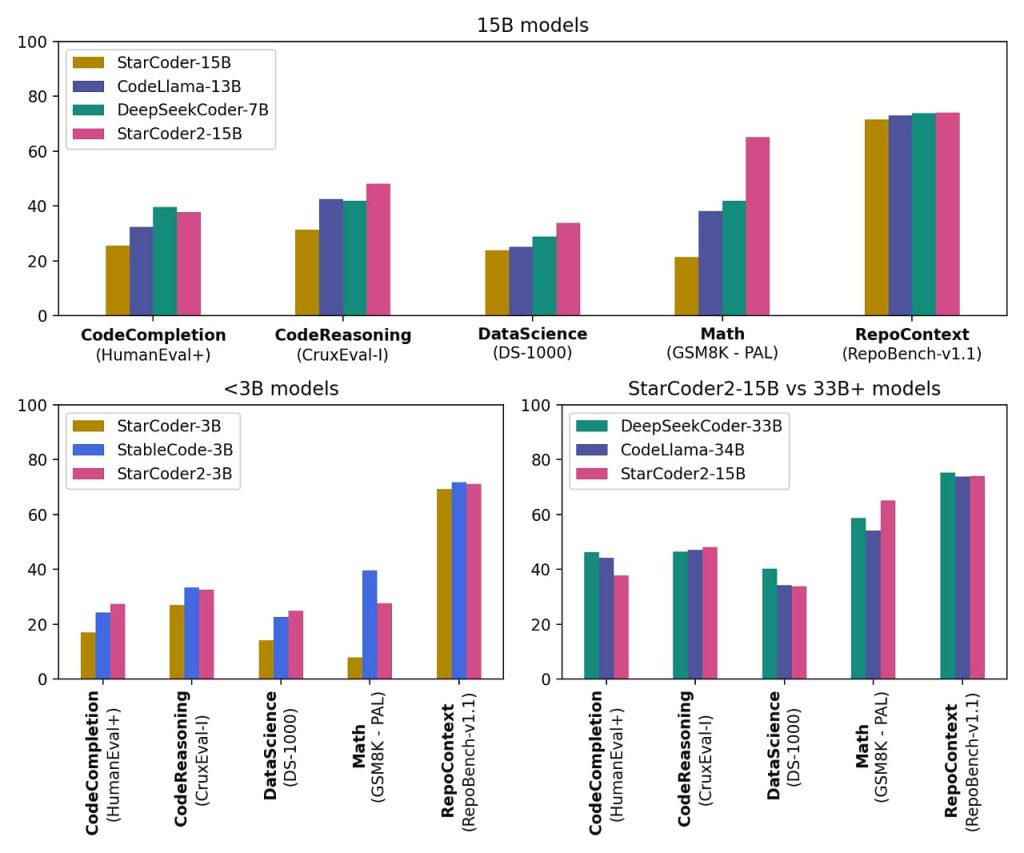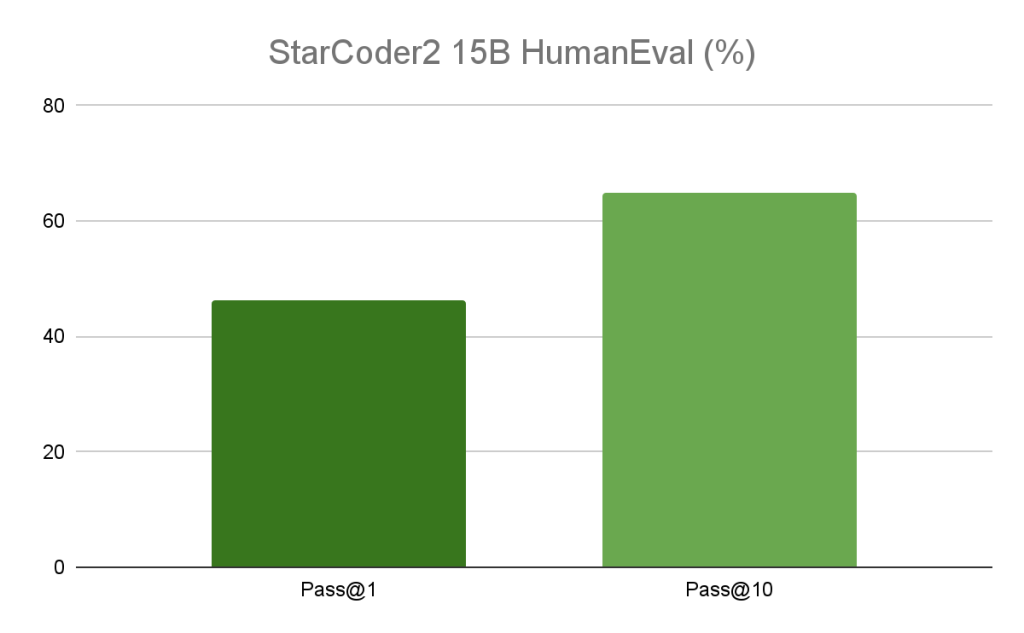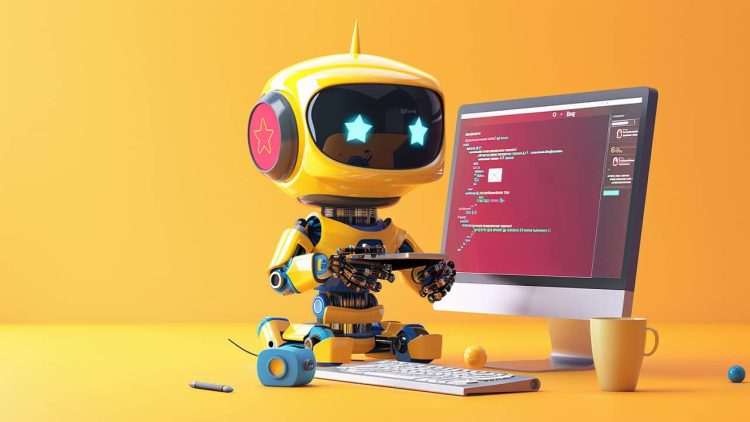Over the past few years, we have seen the rise of various AI-powered code generators such as Amazon CodeWhisperer and Github Copilot, but the demand for an ideal and more fulfilling code generator has now come into the picture lately, with StarCoder2 AI. As a developer, can we say it is the “perfect AI code generator”? That’s what we have to discuss.
Highlights:
- BigCode, with NVIDIA and HuggingFace, has announced StarCoder2, an AI-based code-generating platform.
- Comes in a family of models of parameter sizes of 3B, 7B, and 15B with 15B being the most efficient and optimal.
- Enhanced by NVIDIA using TensorRT-LLM for improved performance and faster code production across multiple GPUs.
What You Need to Know About StarCoder2
StarCoder2 is the 2nd generation Open-Source Coding AI model developed by BigCode Project in collaboration with NVIDIA.
It isn’t a single code generator but rather a family of models. Based on your needs and personalization preferences, the model has been released in three parameters of 3B, 7B, and 15B parameter models trained by ServiceNow, HuggingFace, and NVIDIA respectively.
StarCoder2 3B and 7B models have been trained across 17 programming languages from the stack v2 on a token count of over 3 million. However, as a developer, you need to keep your eyes open for the 15B model which has been trained over enormous 600+ programming languages from a stack v2 token count of 4 million plus!
The training data used for the models has also been incorporated with Git Commits, GitHub Issues, and Jupyter Notebooks. Throughout the entire training process—including sourcing, processing, and translation—the model has been made fully transparent. Furthermore, users have the option to prevent the model from using their code.
StarCoder 2’s Superiority Over Other Models
StarCoder2 has incredible benchmarks that surpass those of one of the versions of Code Llama, Code Llama 33B. Hugging Face also stated on their official blog stated:
“StarCoder2-15B is the best in its size class and matches 33B+ models on many evaluations. StarCoder2-3B matches the performance of StarCoder1-15B.”
Also, According to Hugging Face, StarCoder2 15B can complete a subset of code completion tasks twice as quickly as Code Llama 33B.
Below is a graphical representation of the benchmark comparison of StarCoder2 to CodeLlama-13B, DeepSeekCoder-7B, and StarCoder-15B, which we got from their blog:

On well-known programming benchmarks, the 15B model performs better than top open-code LLMs and is the best in its class. As a point of comparison, the original Starcoder’s accuracy was 30%. The performance of StarCoder2 is excellent for enterprise applications since it optimizes production costs while providing improved inference.
The following figure has been obtained from NVIDIA’s official blog regarding StarCoder2 AI, where it shows a comparison based on human evaluation benchmarks:

We can say that StarCoder2 AI has reached the potential of being the most functional and efficient code-generating model based on its benchmarks.
Looking at Its benefits
If you belong to the community of Generative AI developers and are looking to maximize your coding potential to the fullest with your projects and optimal code generation, then StarCoder 2 might just be for you. Below we have stated some of its amazing features which may fulfill your demands as a coder in 2024.
- StarCoder models can manage a longer code base and detailed coding instructions, gain a better grasp of code structure, and produce better code documentation with a context length of 16,000 characters. This is useful for users who struggle with especially long lines of code and are looking for optimal snippets.
- When requested in normal language, StarCoder2 can summarise and extract code snippets and offer solutions to finish incomplete lines of code. This feature although similar to most traditional models out there, keeps the baseline competition alive by providing users with impromptu suggestions on their project codes.
- With 4 times as much data as the first StarCoder (67.5 terabytes versus 6.4 terabytes), StarCoder2 offers “significantly” better performance at cheaper operating costs, according to Hugging Face, ServiceNow, and Nvidia. This is useful for users who are looking to fine-tune their coding models for work.
- Using first- or third-party data, StarCoder2 can be optimized “in a few hours” using a GPU like the NVIDIA A100 to create apps like chatbots and personal coding assistants. It is theoretically capable of making more accurate and context-aware predictions than the first StarCoder because it was trained on a bigger and more varied data set (~619 programming languages).
You can do a lot with StarCoder and NVIDIA together:
Accelerate your coding tasks, from code completion to code summarization with StarCoder2, the latest state-of-the-art, open code #LLM built by @HuggingFace, @ServiceNow, and NVIDIA.
— NVIDIA AI Developer (@NVIDIAAIDev) February 28, 2024
Learn more 👉 https://t.co/48MClod9PP pic.twitter.com/O1PUWKNSQN
Thus, StarCoder2 AI is helpful for you to develop robust, flexible, huge, and optimized code snippets and data sets in short amounts of time. Do try out the 15-B parameter model for the latest benefits.
How to Access StarCoder2 AI?
To guarantee royalty-free distribution and streamline the process for businesses to incorporate the model into their use cases and solutions, the StarCoder2 models are made freely available under the BigCode Open RAIL-M license.
Also, as a component of NVIDIA AI Foundation Models and Endpoints, StarCoder2 gives users access to a selection of generative AI models that have been developed by the community and by NVIDIA, which they may use, alter, and use in business applications.
You can experience StarCoder2 in the NVIDIA AI playground along with other top models like Llama 70B, Mixtral 8X7B, Nemotron-3, and Stable Diffusion. The models are optimized for performance using NVIDIA TensorRT-LLM and are provided in. nemo format for simple customization with NVIDIA NeMo.
The NVIDIA Effect
TensorRT-LLM, an open-source library for designing, optimizing, and running large language models for inference, has been used by NVIDIA to enhance StarCoder2. This lowers compute costs in production and allows developers to achieve faster throughput and lower latency during inference.
Optimized attention mechanisms, model parallelism strategies like tensor and pipeline parallelism, in-flight batching, quantization, and other strategies have all contributed to StarCoder2’s gains in latency and performance.
This will allow developers to run StarCoder2 AI on most GPUs and unleash their LLM coding potential to the max.
NVIDIA has also released their Chat with RTX software that coders can utilize to improve their productivity.
Conclusion
StarCoder 2 is a great example of mixing GPU optimization with the large language model to improve code generation performance. Groq AI recently adopted a similar approach to becoming the world’s fastest AI. Let’s see how it performs in the days to come. Until then stay tuned!








